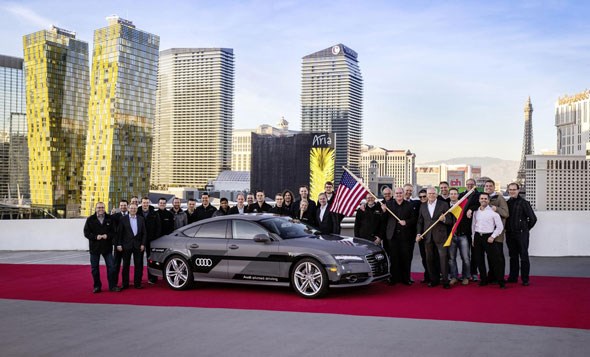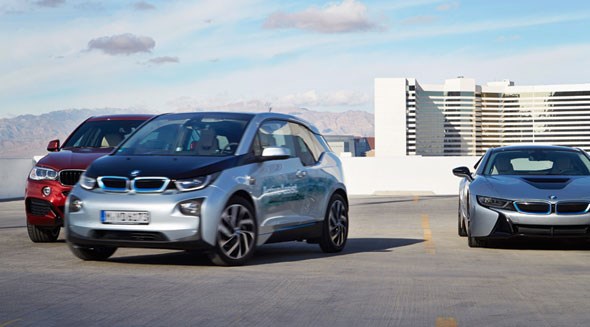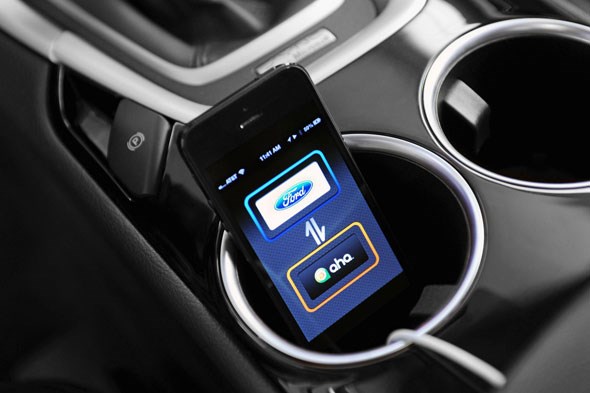
The International CES (Consumer Electronics Show) in Las Vegas is underway once again, an annual melting pot of futuristic tech, from 3D printers to robotics.
There’s always a strong presence from the automotive industry at the show, and this year is no exception. Here are few of the more interesting car bits from the show, with the rise of gesture control, autonomous driving (and parking) and Big Brother watching your driving being a few of the standout themes.

VW
Touchscreens are so passé. It seems that in the near future, people will control functions within their cars by movement as much as by touch.
Volkswagen’s Golf R Touch concept can recognise certain hand gestures by camera, meaning that in theory it’s easier for the driver to keep their eyes on the road rather than looking at the part of the touchscreen they’re trying to prod with a digit. The R Touch concept car is significant in that nearly all the interior controls are made up of touchscreens and sensor switches – heaven for some drivers, a vision of hell for others, no doubt. There are three displays: a big high-res touchscreen, a smaller touch surface beneath it for the climate control and other functions, and a digital instrument panel. The layout of the screens can be rearranged to the driver’s choice, as on a tablet or smartphone.
Also on the VW stand at CMS is a wireless inductive charging system for the eGolf.
‘At this point, it is clear that the car and computer can no longer be viewed as separate from one another. The car and computer are one,’ says Volkswagen. Sounds like an ominous line from a Terminator movie…

BMW
BMW is beavering away on gesture control too, with a next-generation iDrive design featuring a camera mounted in the car’s roof that can recognise certain hand movements from the driver, such as a circular motion or a push towards the screen.
Meanwhile, a new ‘Touch Command’ system maps across lots of the iDrive functions to a separate
Android tablet docked in the rear seats so passengers in the back can adjust the climate control, change the radio station and so on. This particular system’s a likely one to two years away from production.
There’s another step towards a future where you’ll be able to hop out of your car in a multi-storey car park and leave it to park itself. An i3 concept at CES uses four laser scanners to map the area around the car, allowing the car’s ‘Remote Valet Parking Assistant’ to find an empty space and guide the car into it. Once you’re back with your shopping, summon the i3 by barking a voice command instruction into your smartwatch and the i3 will meet you at the car park exit. What could possible go wrong?

Audi
Continuing the driverless theme, Audi’s ‘Piloted Driving’ A7 concept arrived at CES after a 560-mile trek from Silicon Valley, during most of which it drove itself.
That’s made possible by California’s recent law change enabling testing of driverless vehicles on public roads, providing an experienced Audi test driver was on board and someone was sat behind the wheel to take over in an emergency.
In 2014 a driverless Audi RS7 lapped the Hockenheim circuit in Germany at competitive speeds – click here to read more.

Mercedes
Mercedes is keen not to be left out on the driverless action too, this futuristic limo concept dubbed the F 015 able to chauffeur its passengers itself while they relax in four swivelling armchairs within its lounge-style interior.
Click here to read the full story on the Mercedes F 105.

Ford
Ford has used the CES show to announce a series of mobility ‘experiments’, to take place around the world. In the UK, that includes the pilot test of a Boris bike-style on-demand city driving scheme using electric Ford Focuses and petrol Fiestas, reserved via an app or over the phone and then accessible 24/7, priced by the minute.
There’ll also be a look at how Big Brother monitoring of your car and your driving via GPS smartphone data could be directly linked to your insurance price, and could be used by authorities to monitor congestion and traffic flow. The idea of sending driver’s smartphone data to local authorities is also being harnessed for a further study to help drivers find empty parking spaces in their vicinity.